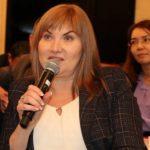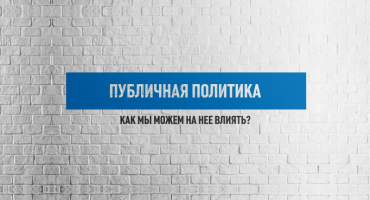What is media hate language? To understand this, several factors must be identified.
First of all, hate language is a rhetoric of hatred, any forms of negatively evaluative expressions and visual content in the media that are considered unpleasant and humiliating for representatives of any race, ethnic, religious, gender or social group. Hate language can be a form of discrimination and provoke stirring and intolerance. Or it may not be provoking when some speech patterns are used in positive narratives.
Hate speech is any form of negative evaluation expression and visual content that is considered unpleasant and humiliating for representatives of any race, ethnic, religious, gender or social group.
The paradox is that hate language is part of freedom of expression and for the most part cannot be prohibited. However, do not forget that freedom of expression is a matter of internal ethics, and conflict-sensitive journalism is built on this principle.
Freedom of expression is the right to hold one’s own opinion, to freely receive and disseminate information and ideas without any interference or boundaries.
Most often, the rhetoric of hatred is expressed in derogatory clichés and stereotypes, which can be objective, but offensive to some people in terms of verbal form of content.
For example, in stories on sensitive topics, journalists often describe heroes using generalizing hackneyed phrases and conflict-generating stereotypes.
Clichés are stylistically colored speech stamps that have developed in the mass consciousness as a template designation of a certain group representative. Stereotypes are a generalized judgment of representatives of one group from the point of view of others.
Here are some examples of the hate language that are very common in the media when describing:
Religious groups
“He had extremist looking beard and cropped trousers.” “There was a hijab girl together with sakalchan (Kyrgyz – a young bearded man, a religionist) sitting in the minibus.” (“Examples from media monitoring of the hate language of the School of Peacekeeping and Media Technologies in Central Asia are demonstrated for educational purposes”)
Ethnic groups
“There was a fight involving people of Caucasian ethnicity and Asian gooks .” “Their children do not go to school, since all Roma are thieves , and some should do this business every day” (“Examples from media monitoring of the hate language of the School of Peacekeeping and Media Technologies in Central Asia are demonstrated for educational purposes”).
Gender
“We see that they act according to the hadiths of the prophet. Faggots and pedophiles are thrown from the upper floors ” (“ Examples from media monitoring of the hate language of the School of Peacekeeping and Media Technologies in Central Asia are demonstrated for educational purposes ”)
Social groups
“Myrks ( mambets in Kazakhstan, haryp in Uzbekistan) who came from the villages turned the capital into a dirty city. They should go back and forced to work hard! ” (“Examples from media monitoring of the hate language of the School of Peacekeeping and Media Technologies in Central Asia are demonstrated for educational purposes”).
The clichés and stereotypes highlighted in the examples are a negatively evaluating type of hate language, which cannot be prohibited, since it is not illegal. However, from the point of view of ethics and correctness, journalists should not use such derogatory constructions in their stories that may be familiar in everyday speech. This is due to the fact that such stylistically colored clichés, especially in materials on conflict-sensitive topics, can further demonize a vulnerable group and increase their negative perception of the audience.
What words could replace these clichés and stereotypes so as not to increase intolerance in society towards the described groups?
«He had an extremist looking beard and cropped trousers.»
«There was a hijab girl together with sakalchan (Kyrgyz – a young bearded man, a religionist) sitting in the minibus.”
“There was a fight involving people of Caucasian ethnicity and Asian gooks.
“Their children do not go to school, since all gypsies are thieves and they should do this business every day”
“We see that they act according to the hadiths of the prophet. Faggots and pedophiles are thrown from the upper floors ”.
“Myrks ( mambets in Kazakhstan, haryp in Uzbekistan) who came from the villages turned the capital into a dirty city. They should go back and forced to work hard! ”
Examples of how it is wrong and how it correct:
“He had an extremist looking beard and cropped trousers.”
“It was a man with a beard, dressed in cropped trousers.”
“There was a hijab girl together with sakalchan (Kyrgyz – a young bearded man, a religionist) sitting in the minibus.”
“There was a woman in scarf together with a bearded man sitting in a minibus.”
“There was a fight involving people of Caucasian ethnicity and Asian gooks“
“There was a fight involving ten people ”
“Their children do not go to school, since all gypsies are thieves, and they should do this business every day”
“Their children do not go to school, and they themselves do not work and beg in the street, and must do this daily”
“We see that they act according to the hadiths of the prophet. Faggots and pedophiles are thrown from the upper floors ”
“We see that they act according to the hadiths of the prophet. Faggots and pedophiles are thrown from the upper floors ”
“Myrks ( mambets in Kazakhstan haryp in Uzbekistan) who came from the villages turned the capital into a dirty city. They should go back and forced to work hard! ”
“Internal migrants from the villages have turned the capital into a spoiled city”
Hate language is common in journalistic texts and in hidden forms. Sometimes, when covering security issues, reporters use hate language in the form of distortion of terms and substitution of concepts, without thinking about what consequences this will bring. As in this paragraph from a newspaper article:
“According to the source, D. was a calm person. He noted that at that time the organizer of the attacks did not go to the mosque. ”
From this proposal, the audience can conclude: when a calm person began to go to the mosque, he began to carry out terrorist attacks. Hidden rhetoric here is expressed in the substitution of concepts, but also in the unreasonable confusion of Islam with terrorism.
“According to the source, D. was a calm person. He noted that at that time the organizer of the attacks did not go to the mosque. ”
- substitution of concepts
- unreasonable
- blending Islam with terror
Additionally, this design is also one of the forms of hate rhetoric, although it does not contain derogatory clichés and is classified as “Reasoning about the superiority of one’s own ethnic group”.
“We are a great nation! We gave the world great artists, writers, poets! Let us not forget about our greatness! ”
Here, few people think that the exaltation of a group on the principle of ethnicity automatically reduces the status of other ethnic groups living in the state where the media broadcast such statements, and thus marginalize these groups. It would be correct instead of the word “nation” to indicate the name of the country and write so: “We are the great people of name of the country”, which is a positive construction and works to consolidate society.
“We are the great people of “name of the country”
Another common type of hate language is classified as creating a negative image of a religious, ethnic, or any social group through generalizing stereotypes and conjectures .
“Since all jobs were taken by the Chinese, people of small Kyrgyz nation are forced to leave either to work in Russia or to fight in Syria for jihad.”
This example from the article contains several errors at once, in the form of different types of hate language:
The first is a generalized stereotype, unconfirmed by facts – the mention of a Chinese ethnic group in a negative context.
At the same time, the inscriptions appear on the left or right:
“All jobs were taken by the Chinese” –
this is a generalizing stereotype, unconfirmed by any facts – a mention of a Chinese ethnic group in a negative context:
Then the above sentence is crossed out and another inscription appears:
NECESSARY TO WRITE: “Unemployment in Kyrgyzstan is …%. At the same time, …% of jobs are held by foreigners (one can list from which countries and indicate exactly how many jobs are held by Chinese citizens. ”
The second is the creation of a negative image of an ethnic group through its minimization. This construction with the mention of the ethnic group and the adjective word “small” can cause a feeling of inferiority in the audience belonging to the given ethnic group.
Quiz Maker – powered by Riddle
If you have found a spelling error, please, notify us by selecting that text and pressing Ctrl+Enter.






